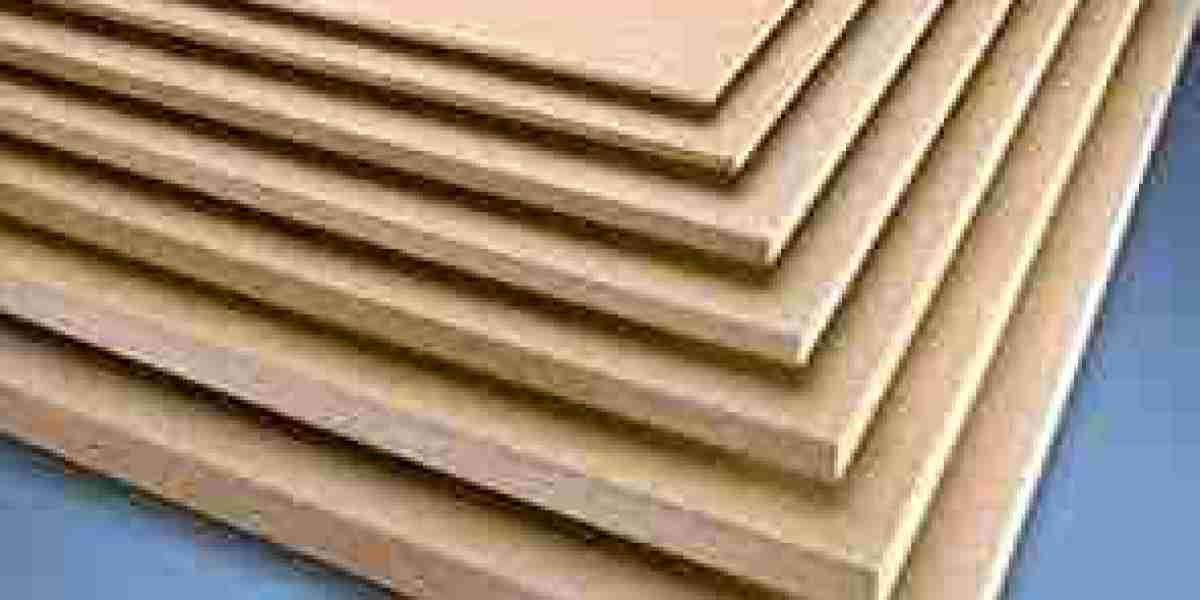The global Medium Density Fiberboard (MDF) market is experiencing significant growth, driven by the increasing adoption of sustainable building practices. As environmental concerns and the demand for eco-friendly materials rise, MDF has emerged as a preferred alternative to traditional wood products in construction and furniture manufacturing.
1. Sustainability as a Catalyst for MDF Market Expansion
Sustainable building practices have become a central focus in the construction industry, influencing material choices and driving the demand for environmentally friendly products. MDF, made from recycled wood fibers and low-emission resins, aligns well with these sustainability goals. Its production often involves using wood waste, reducing the need for virgin timber and contributing to forest conservation.
Manufacturers are increasingly adopting eco-friendly adhesives and additives with low formaldehyde emissions to ensure indoor air quality and safety. This shift not only meets regulatory requirements but also caters to consumer preferences for healthier living environments. The growing emphasis on green building certifications and eco-labels further accelerates the adoption of sustainable materials like MDF.
2. Technological Innovations Enhancing MDF's Environmental Profile
Advancements in technology have led to the development of specialized MDF products tailored for sustainable applications. Moisture-resistant and fire-retardant MDF variants have been introduced to meet specific building requirements, particularly in regions with high humidity or stringent fire safety regulations.
Moreover, the industry is witnessing a surge in the production of low-emission and formaldehyde-free MDF products. These innovations are crucial in addressing health concerns associated with traditional MDF and are becoming increasingly popular in residential and commercial projects.
3. Regional Market Dynamics and Growth Projections
The Asia-Pacific region, particularly China and India, holds a dominant share of global MDF production, contributing to over 40% of the market's growth. Rapid urbanization, infrastructure development, and increasing consumer demand for sustainable building materials are key drivers in these markets.
In India, the MDF market size was estimated at 2.8 million cubic meters in 2021, with projections indicating a compound annual growth rate (CAGR) of 15-20% to reach 6,000 crores INR by 2026. This growth is fueled by the rising demand for ready-to-assemble furniture and the implementation of stringent government regulations aimed at reducing the use of traditional wood products.
4. Challenges and Opportunities in Sustainable MDF Production
While the shift towards sustainable MDF presents significant opportunities, it also poses challenges. The production of MDF involves the use of adhesives and resins, typically urea-formaldehyde or phenol-formaldehyde, which can emit volatile organic compounds (VOCs). These emissions can have adverse effects on indoor air quality and contribute to health issues. To mitigate this challenge, manufacturers are working to develop low-emission and formaldehyde-free MDF products, but these often come at a higher cost.
Additionally, the disposal of MDF at the end of its lifecycle can be problematic. Unlike natural wood, MDF does not biodegrade easily, and its disposal in landfills can contribute to environmental issues. Finding sustainable disposal or recycling solutions for MDF products is an ongoing challenge.
5. Future Outlook: Embracing Sustainability for Continued Growth
The integration of sustainable practices in MDF production is not just a trend but a necessity for future growth. Manufacturers are investing in research and development to enhance the environmental performance of their products, including advancements in adhesive technologies that reduce VOCs and innovations in recycling and waste management.
As the demand for sustainable materials continues to rise, MDF manufacturers are likely to see increased opportunities for growth, driven by their ability to offer products that contribute to environmentally responsible construction and design practices. The focus on sustainability also drives innovation within the MDF industry, positioning it as a key player in the global movement towards greener building solutions.
Conclusion
The Medium Density Fiberboard market is poised for significant growth, propelled by the increasing emphasis on sustainable building practices. Through technological innovations and a commitment to environmental responsibility, MDF is set to play a pivotal role in the future of eco-friendly construction and design. Manufacturers that embrace these sustainable practices will not only meet regulatory and consumer demands but also position themselves for long-term success in a rapidly evolving market.




